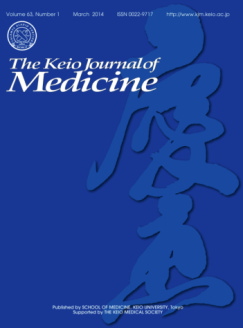
- |<
- <
- 1
- >
- >|
-
Yohei Mikami, Takanori Kanai原稿種別: INVITED REVIEW
2023 年 72 巻 2 号 p. 29-43
発行日: 2023年
公開日: 2023/06/25
[早期公開] 公開日: 2023/03/10ジャーナル フリー HTMLInflammatory bowel diseases (IBD) are currently recognized to involve chronic intestinal inflammation in genetically susceptible individuals. Patients with IBD mainly develop gastrointestinal inflammation, but it is sometimes accompanied by extraintestinal manifestations such as arthritis, erythema nodosum, episcleritis, pyoderma gangrenosum, uveitis, and primary sclerosing cholangitis. These clinical aspects imply the importance of interorgan networks in IBD. In the gastrointestinal tract, immune cells are influenced by multiple local environmental factors including microbiota, dietary environment, and intercellular networks, which further alter molecular networks in immune cells. Therefore, deciphering networks at interorgan, intercellular, and intracellular levels should help to obtain a comprehensive understanding of IBD. This review focuses on the intestinal immune system, which governs the physiological and pathological functions of the digestive system in harmony with the other organs.
抄録全体を表示PDF形式でダウンロード (3183K) HTML形式で全画面表示
-
Goh Kobayashi, Kenji F. Tanaka, Norio Takata原稿種別: ORIGINAL ARTICLE
2023 年 72 巻 2 号 p. 44-59
発行日: 2023年
公開日: 2023/06/25
[早期公開] 公開日: 2023/02/04ジャーナル フリー HTML
電子付録The standard method for sleep state classification is thresholding the amplitudes of electroencephalography (EEG) and electromyography (EMG) data, followed by manual correction by an expert. Although popular, this method has some shortcomings: (1) the time-consuming manual correction by human experts is sometimes a bottleneck hindering sleep studies, (2) EEG electrodes on the skull interfere with wide-field imaging of the cortical activity of a head-fixed mouse under a microscope, (3) invasive surgery to fix the electrodes on the thin mouse skull risks brain tissue injury, and (4) metal electrodes for EEG and EMG recording are difficult to apply to some experimental apparatus such as that for functional magnetic resonance imaging. To overcome these shortcomings, we propose a pupil dynamics-based vigilance state classification method for a head-fixed mouse using a long short-term memory (LSTM) model, a variant of a recurrent neural network, for multi-class labeling of NREM, REM, and WAKE states. For supervisory hypnography, EEG and EMG recording were performed on head-fixed mice. This setup was combined with left eye pupillometry using a USB camera and a markerless tracking toolbox, DeepLabCut. Our open-source LSTM model with feature inputs of pupil diameter, pupil location, pupil velocity, and eyelid opening for 10 s at a 10 Hz sampling rate achieved vigilance state estimation with a higher classification performance (macro F1 score, 0.77; accuracy, 86%) than a feed-forward neural network. Findings from a diverse range of pupillary dynamics implied possible subdivision of the vigilance states defined by EEG and EMG. Pupil dynamics-based hypnography can expand the scope of alternatives for sleep stage scoring of head-fixed mice.
抄録全体を表示PDF形式でダウンロード (4563K) HTML形式で全画面表示
-
Masato Hayashi, Takeshi Fujita, Hisayuki Matsushita原稿種別: CASE REPORT
2023 年 72 巻 2 号 p. 60-64
発行日: 2023年
公開日: 2023/06/25
[早期公開] 公開日: 2023/02/04ジャーナル フリー HTMLA 75-year-old man underwent distal gastrectomy for advanced gastric cancer in September 2018. During the adjuvant chemotherapy, computed tomography (CT) revealed recurrence sites in the liver and para-aortic lymph nodes. Therefore, chemotherapy was initiated. After first-line (capecitabine with oxaliplatin) and second-line (paclitaxel with ramucirumab) treatments, nivolumab was used as third-line chemotherapy. This treatment showed a strong effect against the tumor. However, following an immune-related adverse effect (irAE) because of nivolumab, the therapy was halted. The irAE was diagnosed with central adrenal insufficiency that was controllable by oral intake of steroids. CPT-11 was started and showed a similarly strong effect to that observed for nivolumab. Eventually, the recurrent tumor lesions became too small to be detected by CT. We discontinued CPT-11 at the request of the patient. Even after discontinuation, no recurrent sites have been observed, allowing us to declare a case of clinical complete response (cCR). In conclusion, even if irAEs occur in a patient, continuing chemotherapy should be considered. However, if cCR is achieved, discontinuation of chemotherapy might be a strategic treatment option.
抄録全体を表示PDF形式でダウンロード (2989K) HTML形式で全画面表示
- |<
- <
- 1
- >
- >|